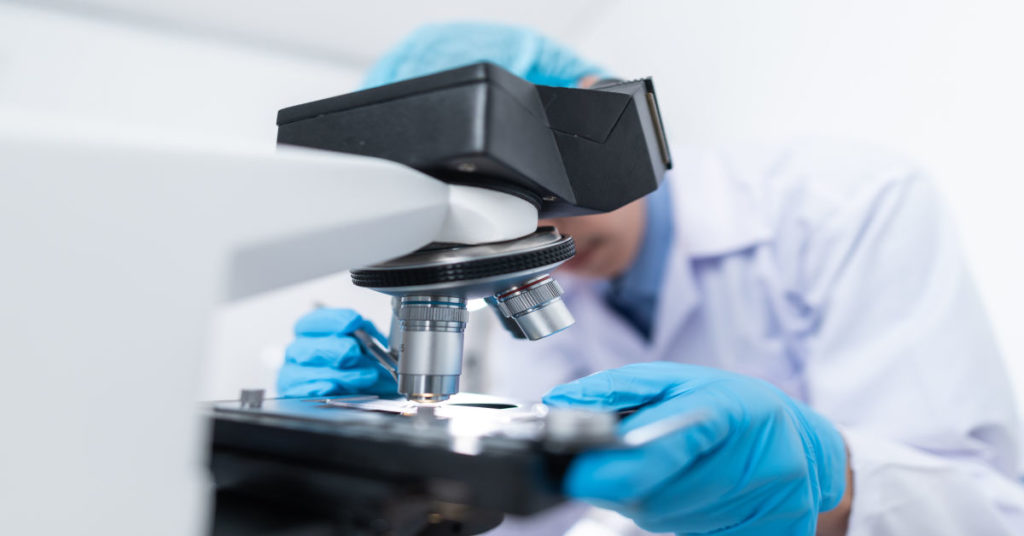Despite extensive scientific research, medics are yet to find answers to many questions.
One critical tool that sheds some light on the analysis of matter in the healthcare industry is a microscope.
It helps to view cells beyond what the ordinary human eye can see. During your academic journey, you must have used one of these tools in a science experiment.
This brings us to the question, do nurses use microscopes? Nurses in the operating team must know how to use a microscope.
In nursing, the microscopy skill aids in scraping yeast or fungus, parasites such as lice, joint aspirate, etc.
In nursing college, learners are taught how to use a microscope to examine specimens such as urine, blood smears, vaginal discharge, body fluids, etc.
These tools teach students the structure of things. They can compare organisms and learn the different functions of a cell.
With microscopes, doctors can treat diseases better by identifying the microbes that cause an infection.
This guarantees better treatment and prescription of proper antibiotics.
It’s also worth noting that the invention of new drugs requires high-powered microscopes.
Table of Contents
Do Doctors Use Microscopes?
Doctors use microscopes in plastic surgery, dentistry, and ophthalmic surgery (ear, nose, and throat).
To some extent, these tools are helpful in reconstructive surgery and orthopedics.
Without microscopes, doctors would not identify cellular diseases. Experts can observe how pathogens attack body cells.
In addition, health professionals use microscopes to examine the different types of organisms in the body.
High-quality microscopes make diagnosis simpler and more accurate. They can diagnose infections in female reproductive systems – OB/GYN.
Why Are Microscopes Important in Medicine?
Microscopes enable doctors to study organisms that are not detectable with the naked eye.
The modern designs allow users to dive into the world of microns.
With the advancement of LED illumination, health experts can now bridge between machine and quality vision.
Some microscopes can be used in diagnostics to provide patients with less traumatic microsurgery. Let’s dive deeper into the applications.
Medical diagnostics:
Microscopes help to identify ailments, especially blood cellular diseases.
These tools observe the foreign bodies and categorize cellular structures with outstanding quality.
Some microscopes use new imaging technology to allow physicians to look at cells of living things.
For instance, medics can check the tissues in the gastrointestinal tract and lungs.
Microscopes help to check the red blood cells, white blood cells, and platelets.
Some are designed for hematology to study blood diseases and disorders.
Doctors use these tools to observe different cells and categorize them for abnormalities.
Whether it’s a practical exam or searching for new treatments, a microscope is a critical tool.
Medical research:
Microscopes help users research new paths of treatment.
A good example is using stereo-distance microscopes in the field of neuroscience.
These tools also help users study tissue adaptations and neural networks.
In the school of medicine, a microscope identifies the microbes in tissue and blood samples.
Researchers often use these tools to research the cure for illnesses like cancer. Also, stereo microscopes allow medics to view tumors.
Surgical procedures:
Microscopes come in handy during those complex surgical procedures.
Those that use high-precision optics ensure surgeons get an up-close view of the human body.
If you visit the operation room, you’ll see state-of-the-art microscopes.
In a surgical setting, the surgeon must make incisions. A microscope will magnify the area as he makes incisions and sutures.
A high-quality microscope is needed to replace a cloudy intraocular lens in the eye by enhancing magnification beyond what a human can see.
Due to advanced coating technologies, optical systems can deliver an accurate diagnosis.
Also, LED efficient illumination helps to bridge the gap between machines and quality services.
Pharmaceutical development
Microscopy plays a critical role in medicine. Through pharmaceutical research, users can identify and investigate material quality.
With electron microscopes, healthcare professionals can track patients’ progress by comparing stockpile images.
Healthcare facilities with microscopes that use advanced technology can share data between specialists and primary healthcare providers.
Conclusion: Do Nurses Use Microscopes?
Without microscopes, it would be challenging to identify cellular illnesses.
Generally, there are four types of microscopes, each suited for specific biological applications (digital, compound, stereo, and handheld microscopes).
In medicine, microscopes diagnose diseases, research, and perform surgical procedures.
Of course, it would be challenging to identify cellular treatments and blood diseases without a microscope.
And thanks to the widespread access to these devices, healthcare professionals can now accurately diagnose diseases.
Related articles of ours:
- Research Nurse Interview Questions
- Plastic Surgery Nurse Interview Questions
- Do Nurses Wear White Coats or Not?
It’d be great if you could give this article a star rating. Thank you in advance!
